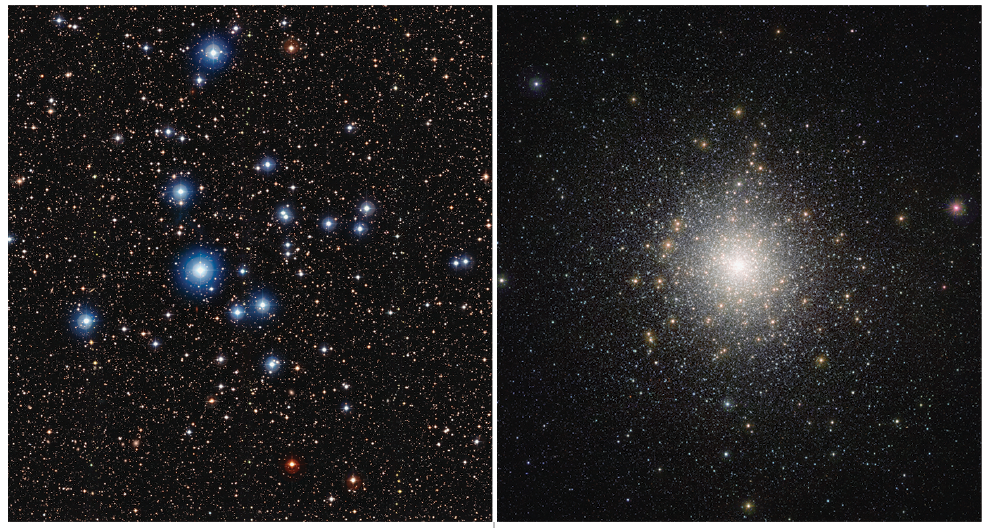
Why are open star clusters in the disk of a spiral galaxy, while globulars are in the halo? Is the same true for irregular and elliptical galaxies?
Leonard C. Boucek
Monmouth Junction, New Jersey
The differences in location between open and globular star clusters result from the interplay between gravity and rotational motion. This rotational motion is called angular momentum, and is a conserved quantity. It is what keeps planets orbiting stars instead of succumbing to gravity and spiraling inward.
Angular momentum helps organize matter into disks. Disk-forming scenarios start with gravitationally bound matter with random motions. Over time, as this cloud of matter contracts and begins to orbit a common center of mass, collisions between particles cancel out their random motions and they converge, forming a spinning, flat disk.
From this tug-of-war between gravity and angular momentum, the gas and dust in a spiral galaxy lie close to the plane of the galactic disk, in a region we call the thin disk. The abundance of such material there is why the young star-forming open clusters are located preferentially in the thin disk. Once young stars leave their open cluster cradles, gravitational interaction with the multitude of other stars in the galaxy causes their motions to become more complex, eventually forming the thick disk of older stars enveloping the thin disk of younger stars.
Globular clusters are also formed in gas-rich environments similar to galactic disks, but with higher gas pressure. We believe globular clusters are now mostly in the galactic halo because these old systems were kicked out of those high-pressure, gas-rich regions relatively early, therefore undergoing less gravitational disruption ever since. This is likely also the reason why globular clusters are significantly more massive than open clusters.
It is hard to define different components in elliptical or irregular galaxies. Ellipticals have stellar populations billions of years old, where globulars are much more common. At such ages, typical open clusters have dissolved into the smooth stellar component of their parent galaxy.
Serge Dieterich & Paul Goudfrooij
HST Instrument Scientist & JWST Instrument Scientist, Space Telescope Science Institute, Baltimore, Maryland









